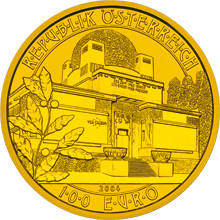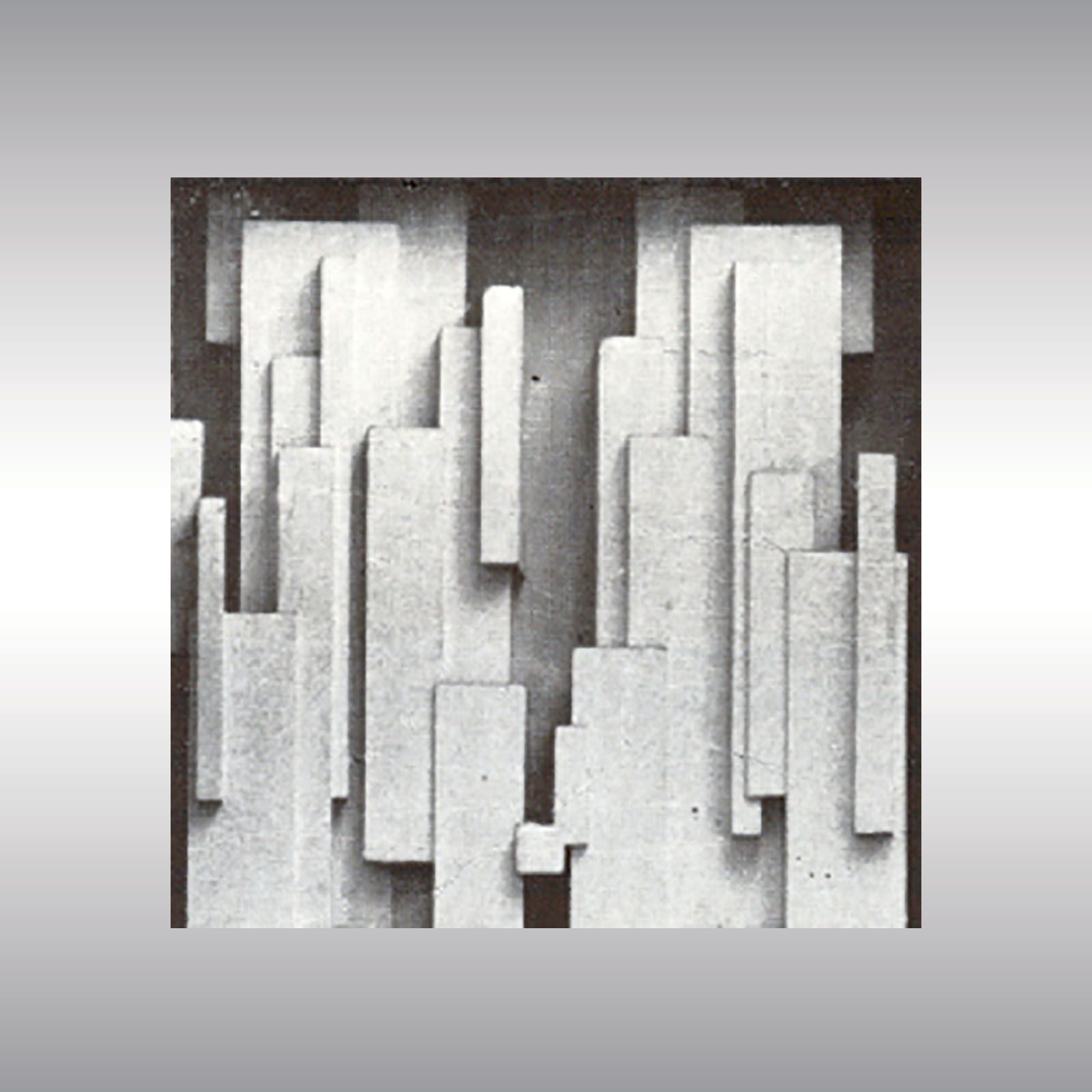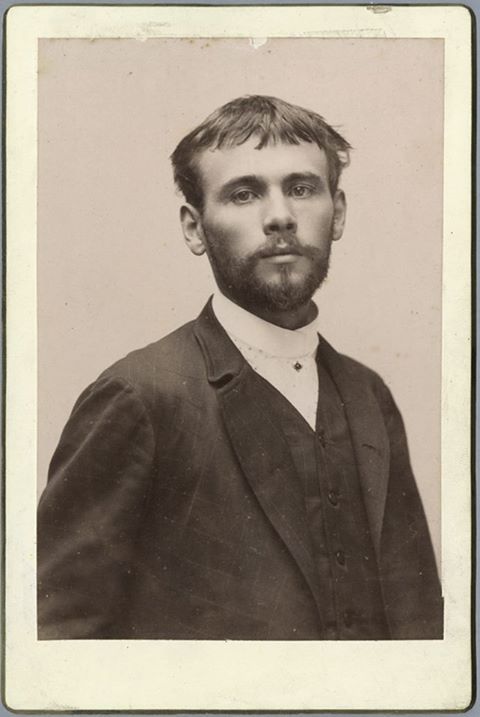|
Edith “Ditha” Moser
Edith "Ditha" Moser (1883–1969) was an Austrian artist and an influential member of the artistic group Vienna Secession. Early life Edith "Ditha" Moser was born in 1883 as Edith Mautner Von Markhof to a wealthy Austrian industrial family. From 1902 to 1905 she studied at the Academy for Applied Arts in Vienna as a guest student under Josef Hoffmann. In 1905, she married Viennese artist Koloman Moser, and they remained married until his death from cancer in 1918. Career Along with her husband, her former professor, and other famous artists such as Gustav Klimt, Moser took part in the Vienna Secession. In the late 1800s, the world saw new artistic trends involving progressive design theory that presented themselves in a variety of movements and styles across countries. As the modern world moved forward, artists desired new ways to both express and withdraw from these changes. In Vienna, which had become a leading city for these new artistic styles, this appeared in the Vienn ... [...More Info...] [...Related Items...] OR: [Wikipedia] [Google] [Baidu] |
Vienna Secession
The Vienna Secession (; also known as the Union of Austrian Artists or ) is an art movement, closely related to Art Nouveau, that was formed in 1897 by a group of Austrian painters, graphic artists, sculptors and architects, including Josef Hoffman, Koloman Moser, Otto Wagner and Gustav Klimt. They resigned from the Association of Austrian Artists ( Vienna Künstlerhaus) in protest against its support for more traditional artistic styles. Their most influential architectural work was the Secession exhibitions hall designed by Joseph Maria Olbrich as a venue for expositions of the group. Their official magazine was called '' Ver Sacrum'' (''Sacred Spring'', in Latin), which published highly stylised and influential works of graphic art. In 1905 the group itself split, when some of the most prominent members, including Klimt, Wagner, and Hoffmann, resigned in a dispute over priorities, but it continued to function, and still functions today, from its headquarters in the ... [...More Info...] [...Related Items...] OR: [Wikipedia] [Google] [Baidu] |
Josef Hoffmann
Josef Hoffmann (15 December 1870 – 7 May 1956) was an Austrians, Austrian-Sudeten Germans, Moravian architect and designer. He was among the founders of Vienna Secession and co-establisher of the Wiener Werkstätte. His most famous architectural work is the Stoclet Palace, in Brussels, (1905–1911) a pioneering work of Modern Architecture, Art Deco and peak of Vienna Secession architecture. Biography Early life and education Hoffmann was born in Brtnice / Pirnitz, Moravia (now part of the Czech Republic), Austria-Hungary. His father was modestly wealthy, the co-owner of a textile factory, and mayor of the small town. His father encouraged him to become a lawyer or a civil servant, and sent him to a prestigious upper school, but he was very unhappy there. He later described his school years as "a shame and a torture which poisoned my youth and left me with a feeling of inferiority which has lasted until this day." In 1887, he transferred instead to the Higher School ... [...More Info...] [...Related Items...] OR: [Wikipedia] [Google] [Baidu] |
Koloman Moser
Koloman Moser (; 30 March 1868 – 18 October 1918) was an Austrian artist who exerted considerable influence on twentieth-century graphic art. He was one of the foremost artists of the Vienna Secession movement and a co-founder of Wiener Werkstätte. Moser designed a wide array of art works, including books and graphic works from postage stamps to magazine vignettes; fashion; stained glass windows, porcelains and ceramics, blown glass, tableware, silver, jewelry, and furniture. Biography Moser was born in Vienna in 1868 to parents Josef and Thresia Moser (née Hirsch); he was the oldest of three siblings. studied at the Wiener Akademie and the Kunstgewerbeschule, where he also taught from 1899. Moser's designs in architecture, furniture, jewellery, graphics, and tapestries helped characterise the work of this era. He drew upon the clean lines and repetitive motifs of classical Greek and Roman art and architecture in reaction to the Baroque decadence of his turn-of-the-centu ... [...More Info...] [...Related Items...] OR: [Wikipedia] [Google] [Baidu] |
Gustav Klimt
Gustav Klimt (14 July 1862 – 6 February 1918) was an Austrian symbolist painter and a founding member of the Vienna Secession movement. His work helped define the Art Nouveau style in Europe. Klimt is known for his paintings, murals, sketches, and other objets d'art. Klimt's primary subject was the female body, and his works are marked by a frank eroticism. Amongst his figurative works, which include allegories and portraits, he painted landscapes. He is best known for '' The Kiss'' and '' Portrait of Adele Bloch-Bauer I.'' Among the artists of the Vienna Secession, Klimt was the most influenced by Japanese art and its methods. Early in his career, he was a successful painter of architectural decorations in a conventional manner. As he began to develop a more personal style, his work was the subject of controversy that culminated when the paintings he completed around 1900 for the ceiling of the Great Hall of the University of Vienna were criticised as pornographic. He ... [...More Info...] [...Related Items...] OR: [Wikipedia] [Google] [Baidu] |
Secession Building
The Secession Building () is a contemporary art exhibition hall in Vienna, Austria. It was completed in 1898 by Joseph Maria Olbrich as an architectural manifesto for the Vienna Secession, a group of rebel artists that seceded from the long-established fine art institution. Description The building features the Beethoven Frieze by Gustav Klimt, one of the most widely recognized artworks of Secession style (a branch of Art Nouveau, also known as Jugendstil in Germany and Nordic countries). The building was financed by Karl Wittgenstein,Monk, ''Ludwig Wittgenstein: The Duty of Genius'': p.8 the father of Ludwig Wittgenstein. The motto of the Secessionist movement is written above the entrance of the pavilion: "To every age its art, to every art its freedom" (). Below this is a sculpture of three gorgons representing painting, sculpture, and architecture. The building has been selected to figure on the national side of the Austrian euro coins, €0.50 Austrian coin. It also appears ... [...More Info...] [...Related Items...] OR: [Wikipedia] [Google] [Baidu] |
Wiener Werkstätte
The Wiener Werkstätte ("Vienna Workshop"), established in 1903 by the graphic designer and painter Koloman Moser, the architect Josef Hoffmann and the patron Fritz Waerndorfer, was a productive association in Vienna, Austria that brought together architects, artists, designers and artisans working in ceramics, fashion, silver, furniture and the graphic arts. The Workshop was "dedicated to the artistic production of utilitarian items in a wide range of media, including metalwork, leatherwork, bookbinding, woodworking, ceramics, postcards and graphic art, and jewelry." It is regarded as a pioneer of modern design, and its influence can be seen in later styles such as Bauhaus and Art Deco. Following World War I, the workshop was beset by financial troubles and material shortages. Attempts to expand the workshop's base were unsuccessful, as was a reorganization under the direction of Austrian artist Philipp Häusler. In 1926, Workshop financier Otto Primavesi's bank failed and ... [...More Info...] [...Related Items...] OR: [Wikipedia] [Google] [Baidu] |
Jugendstil
(; "Youth Style") was an artistic movement, particularly in the decorative arts, that was influential primarily in Germany, Austria and elsewhere in Europe to a lesser extent from about 1895 until about 1910. It was the German and Austrian counterpart of Art Nouveau. The members of the movement were reacting against the historicism and neo-classicism of the official art and architecture academies. It took its name from the art journal , founded by the German artist Georg Hirth. It was especially active in the graphic arts and interior decoration. Its major centers of activity were Munich, Vienna and Weimar and the Darmstadt Artists' Colony founded in Darmstadt in 1901. Important figures of the movement included the Swiss graphic artist Hermann Obrist, Otto Eckmann, the Belgian architect and decorator Henry van de Velde, as well as the Austrians Otto Wagner, Joseph Maria Olbrich, Gustav Klimt and Koloman Moser, among others. In its earlier years, the style was influen ... [...More Info...] [...Related Items...] OR: [Wikipedia] [Google] [Baidu] |
Art Nouveau
Art Nouveau ( ; ; ), Jugendstil and Sezessionstil in German, is an international style of art, architecture, and applied art, especially the decorative arts. It was often inspired by natural forms such as the sinuous curves of plants and flowers. Other characteristics of Art Nouveau were a sense of dynamism and movement, often given by asymmetry or whiplash lines, and the use of modern materials, particularly iron, glass, ceramics and later concrete, to create unusual forms and larger open spaces.Sembach, Klaus-Jürgen, ''L'Art Nouveau'' (2013), pp. 8–30 It was popular between 1890 and 1910 during the Belle Époque period, and was a reaction against the academicism, eclecticism and historicism of 19th century architecture and decorative art. One major objective of Art Nouveau was to break down the traditional distinction between fine arts (especially painting and sculpture) and applied arts. It was most widely used in interior design, graphic arts, furniture, glass ... [...More Info...] [...Related Items...] OR: [Wikipedia] [Google] [Baidu] |
1883 Births
Events January * January 4 – ''Life (magazine), Life'' magazine is founded in Los Angeles, California, United States. * January 10 – A Newhall House Hotel Fire, fire at the Newhall Hotel in Milwaukee, Wisconsin, United States, kills 73 people. * January 16 – The Pendleton Civil Service Reform Act, establishing the United States civil service, is passed. * January 19 – The first electric lighting system employing overhead wires begins service in Roselle, New Jersey, United States, installed by Thomas Edison. February * February 15 – Tokyo Electrical Lightning Grid, predecessor of Tokyo Electrical Power (TEPCO), one of the largest electrical grids in Asia and the world, is founded in Japan. * February 16 – The ''Ladies' Home Journal'' is published for the first time, in the United States. * February 23 – Alabama becomes the first U.S. state to enact an Competition law, antitrust law. * February 28 – The first vaudeville th ... [...More Info...] [...Related Items...] OR: [Wikipedia] [Google] [Baidu] |
1969 Deaths
1969 (Roman numerals, MCMLXIX) was a common year starting on Wednesday of the Gregorian calendar, the 1969th year of the Common Era (CE) and ''Anno Domini'' (AD) designations, the 969th year of the 2nd millennium, the 69th year of the 20th century, and the 10th and last year of the 1960s decade. Events January * January 4 – The Government of Spain hands over Ifni to Morocco. * January 5 – Ariana Afghan Airlines Flight 701 crashes into a house on its approach to London's Gatwick Airport, killing 50 of the 62 people on board and two of the home's occupants. * January 14 – USS Enterprise fire, An explosion aboard the aircraft carrier USS Enterprise (CVN-65), USS ''Enterprise'' near Hawaii kills 28 and injures 314. * January 16 – First successful docking of two crewed spacecraft in orbit and the first transfer of crew from one space vehicle to another (by a space walk) between Soviet craft Soyuz 5 and Soyuz 4. * January 18 – Failure of Soyuz 5's service module to separ ... [...More Info...] [...Related Items...] OR: [Wikipedia] [Google] [Baidu] |
Austrian Graphic Designers
Austrian may refer to: * Austrians, someone from Austria or of Austrian descent ** Someone who is considered an Austrian citizen * Austrian German dialect * Something associated with the country Austria, for example: ** Austria-Hungary ** Austrian Airlines (AUA) ** Austrian cuisine ** Austrian Empire ** Austrian monarchy ** Austrian German (language/dialects) ** Austrian literature ** Austrian nationality law ** Austrian Service Abroad ** Music of Austria **Austrian School of Economics * Economists of the Austrian school of economic thought * The Austrian Attack variation of the Pirc Defence chess opening. See also * * * Austria (other) * Australian (other) * L'Autrichienne (other) is the feminine form of the French word , meaning "The Austrian". It may refer to: *A derogatory nickname for Queen Marie Antoinette of France ** ''L'Autrichienne'' (film), a 1990 French film on Marie Antoinette with Ute Lemper * ''L'Autrichienn ... {{disambig Lang ... [...More Info...] [...Related Items...] OR: [Wikipedia] [Google] [Baidu] |




